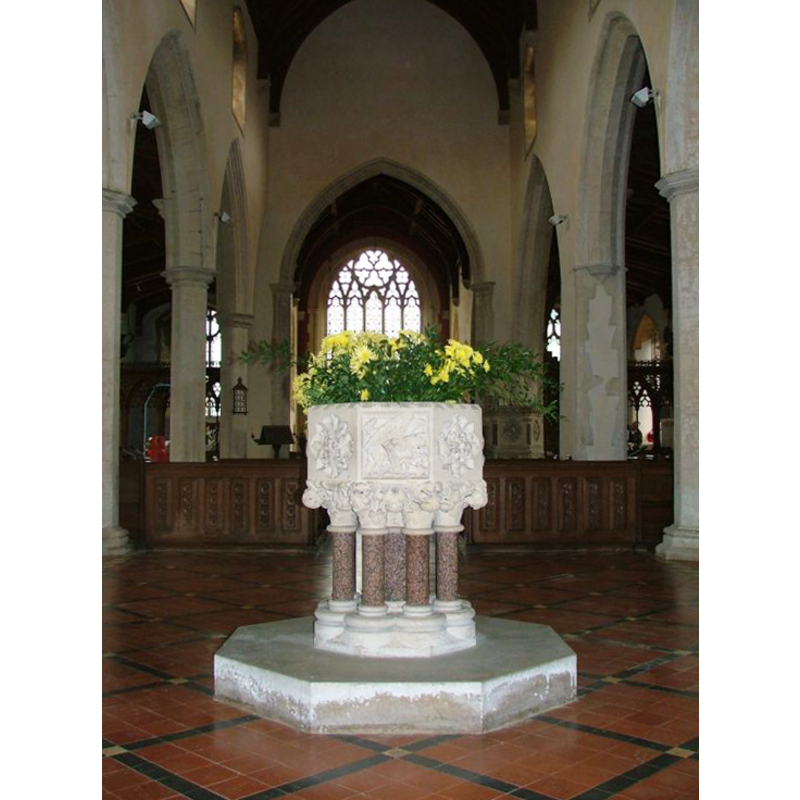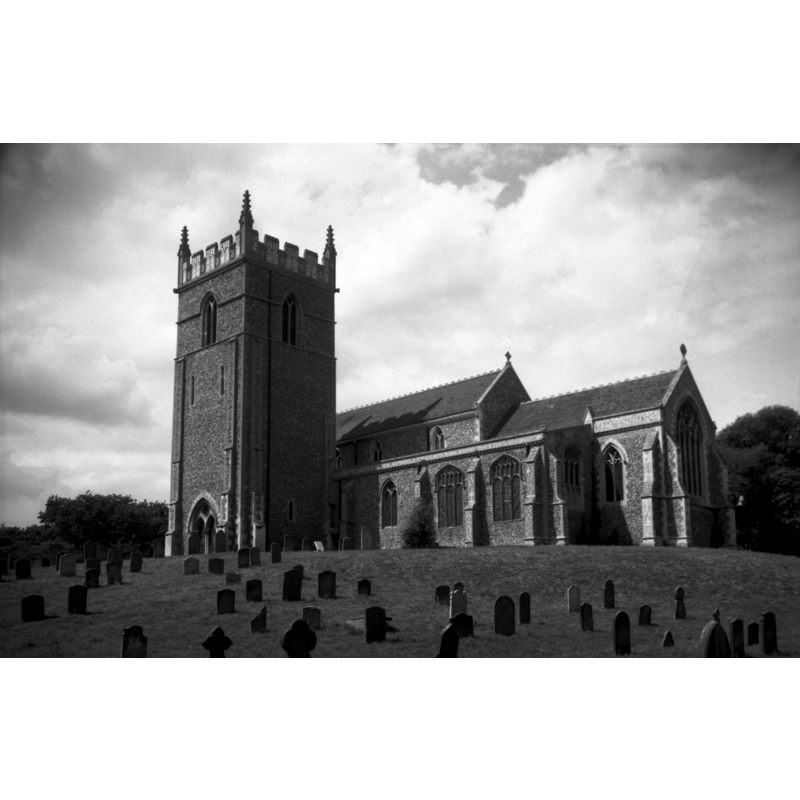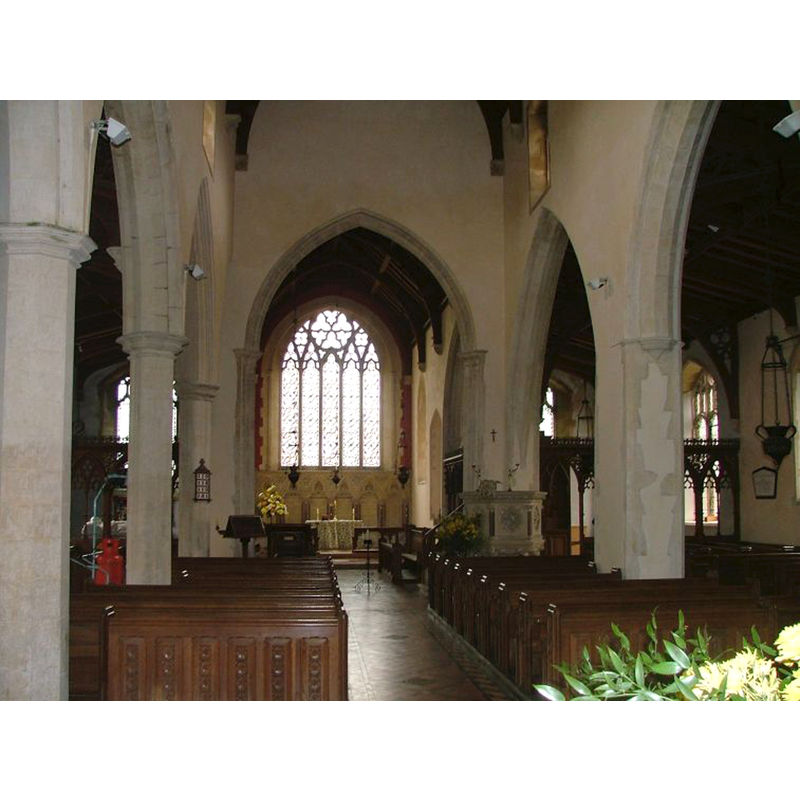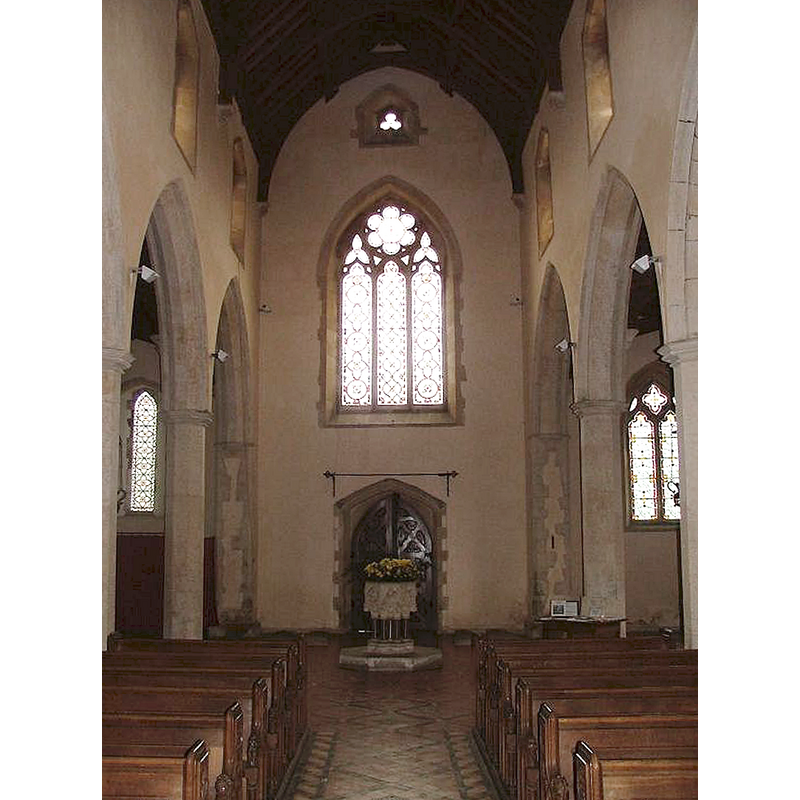Holkham / Holcha / Holcham / Holkham

Image copyright © Simon Knott, 2006
Standing permission
Results: 5 records
view of church exterior - southeast view
Scene Description: Photo caption: "Restored and partially rebuilt in 1870 by James K Colling"
Copyright Statement: Image copyright © George Plunkett, 2013
Image Source: B&W photograph taken 11 July 1993 by George Plunkett [www.georgeplunkett.co.uk/Norfolk/H/Holkham St Withburga's church from SE [7031] 1993-07-11.jpg] [accessed 11 December 2013]
Copyright Instructions: Standing permission by Jonathan Plunkett
view of church interior - nave - looking east
view of church interior - nave - looking west
Scene Description: the modern font at the west end of the nave
Copyright Statement: Image copyright © Simon Knott, 2006
Image Source: digital photograph July 2006 taken by Simon Knott [www.norfolkchurches.co.uk/holkham/holkham.htm] [accessed 11 December 2013]
Copyright Instructions: Standing permission
view of font and cover - west side
view of font and cover in context
Scene Description: the modern font [cf. FontNotes] at the west end of the nave; behind are the north aisle and the north doorway
Copyright Statement: Image copyright © Simon Knott, 2006
Image Source: digital photograph July 2006 taken by Simon Knott [www.norfolkchurches.co.uk/holkham/holkham.htm] [accessed 11 December 2013]
Copyright Instructions: Standing permission
INFORMATION
FontID: 15096HOL
Object Type: Baptismal Font1?
Church/Chapel: Parish Church of St. Withburga
Church Patron Saints: St. Withburga of Dereham
Church Location: Holkham, Norfolk NR23 1AB
Country Name: England
Location: Norfolk, East Anglia
Directions to Site: Located on the coastal A149, near Wells-next-the-Sea
Ecclesiastic Region: Diocese of Norwich
Historical Region: Hundred of North Greehow
Century and Period: 11th - 12th century, Pre-Conquest? / Norman?
Credit and Acknowledgements: We are grateful to Simon Knott, of Norfolk Churches [www.norfolkchurches.co.uk], for his photographs of this church and modern font; we arer also grateful to Jonathan Plunkett for the photograph of this church, taken by his father, George Plunkett, in July 1993
Font Notes:
Click to view
Holkham appears in the Domesday survey in eight entries [http://domesdaymap.co.uk/place/TF8743/holkham/] [accessed 11 December 2013], qualifying as a very large place with seventy households, but there is no mention of church or cleric in any of them. Blomefield (1805-1810) writes: "The church had anciently two medieties, one belonging to the King's manor, the other to that of Tovi, which coming into the Crown, the patronage of both rested there, till granted with those lordships from the Crown [...] William Lord Montchensi gave a moiety of this church to the abbey of West Derham, and King John. [...] in his 2d year confirmed it with all its rights. This was valued at 35 marks, and was appropriated by John Bishop of Norwich". This "William Lord Montchensy" is most likely Warin(e) de Monte-Canisio [aka Montchensi, Montchensie, Montchensy, Munchensi], as Blomefield (ibid.) notes in his entry for Sutton, and related to [son? / grand-son?] Hubert de Montecanisio (b. 1060), the latter originally from Mont-Canisy, Calvados, identified in Keats-Rohan (1997-2002) as a tenant-in-chief in East Anglia. The donation of the 'moiety' of this church to West Derham abbey confirmed by King John [cf. supra] took place in 1201, but the lists of the vicars for each of the medieties are recorded only starting in 1300 and 1314 respectively. The church itself, however, must have been built here by the year 1200. Blomefield (ibid.) writes of it: "The Church stands east of the town, near the sea, on a hill, and is a noted sea mark, commanding an extensive prospect over the great German ocean [...] It is dedicated to St. Withburga, and has a nave, north and south isle, with a chancel, all covered with lead. At the south-west corner of the south isle, stands a strong four-square tower embattled, with 4 bells; the lower part serves as a porch to the church; the north and south isles extend on each side of the chancel, and serve as buttresses against the raging wind, &c. of the sea. The east end of both these isles were chapels, and are inclosed". There was a major alteration of the church here in the 18th century, and Blomefield (ibid.) writes of "a marble font" introduced at the time of a major renovation of this church in 1767 "at the sole expense of her Ladyship [...] Margaret, Countess Dowager of Leicester". Pevsner & Wilson (1999) report a Victorian font in this church, "by Colling presumably" [i.e., James .K Colling, responsible for the 1868-1871 restoration of this church]. This modern font is illustrated in Knott (2006). A busily decorated octagonal basin on the usual Victorian coloured marble shafts. [NB: we have no information on the earlier fonts of this church]
COORDINATES
UTM: 31U 353294 5869920
REFERENCES
Blomefield, Francis, An essay towards a topographical history of Norfolk, 1805-1810
Blomefield, Francis, An essay towards a topographical history of Norfolk, 1805-1810
Keats-Rohan, K.S.B., Domesday people: a prosopography of persons occurring in English documents, 1066-1166 [NB: vol. 2 has title: Domesday descendants], Woodbridge, Suffolk: Boydell Press, 1999-2002
Knott, Simon, The Norfolk Churches Site, Simon Knott, 2004. [standing permission to reproduce images received from Simon (February 2005]. Accessed: 2009-08-06 00:00:00. URL: www.norfolkchurches.co.uk.
Pevsner, Nikolaus, Norfolk 2: North-West and South (2nd ed.), London: Penguin, 1999



![the modern font [cf. FontNotes] at the west end of the nave; behind are the north aisle and the north doorway](/static-50478a99ec6f36a15d6234548c59f63da52304e5/compressed/1131217043_compressed.png)